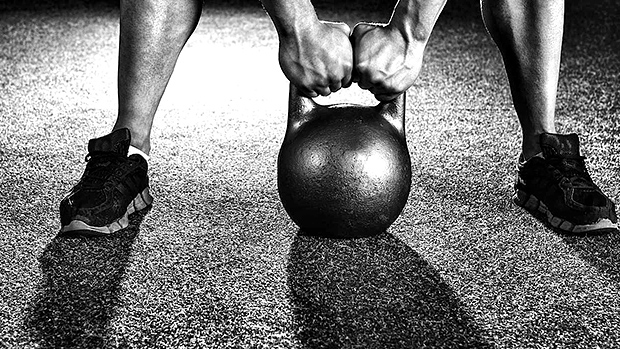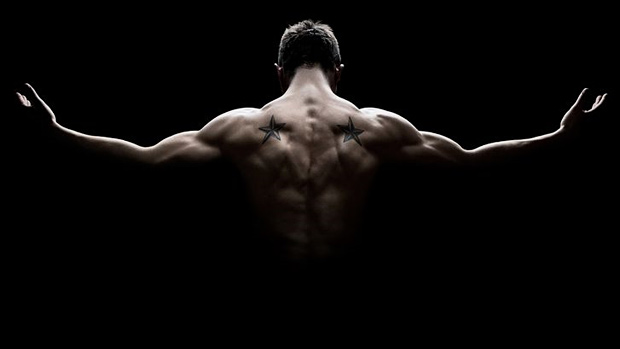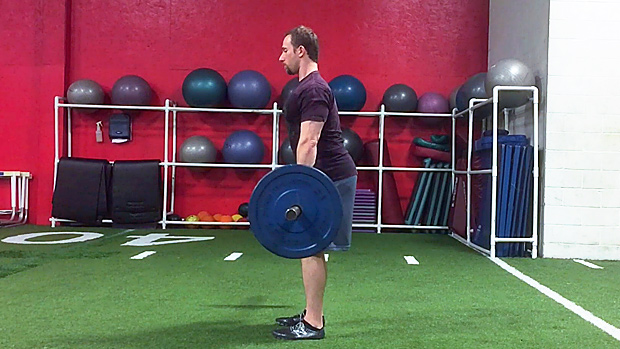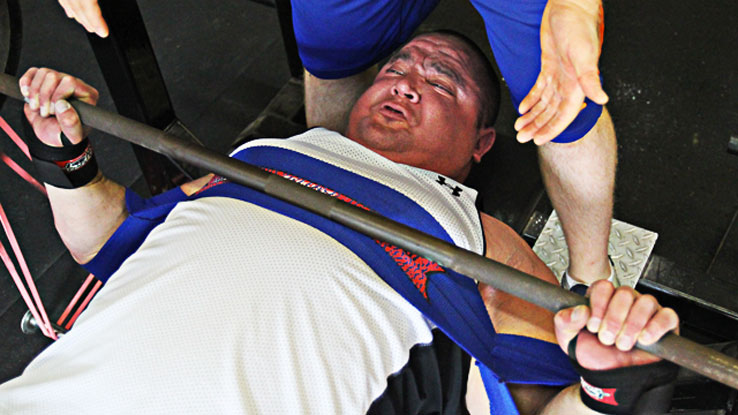Perfect Your Hip Hinge
This movement pattern is seen in the deadlift, kettlebell swing, RDL, and pull-through. To really dial it in, first master the kettlebell deadlift. In fact, mastering the deadlift is a prerequisite to swinging the kettlebell.
Any time we add velocity to a load, we're adding a progression. So to nail the swing we have to take a step back and move the load in a more controlled fashion. I'm not talking about pulling a max loaded barbell. For our purposes, the best place to start is deadlifting a single dumbbell or kettlebell from the floor.
First, you'll put a single kettlebell directly under your body's center of mass, which is usually between the posterior aspects of the arches of the feet. Unlike the anteriorly loaded barbell, this position allows your hinge to stay posteriorly directed at the hips, which is our goal for optimizing the hip hinge pattern.
Also, by putting a single weight between your feet, you can feel what it is to keep tension and torque through the shoulders with the arms tight to the body, working as a strong and stable unit. Losing tension in the shoulders, mainly due to a lack of lat involvement, can quickly transition into the loss of tension in other regions such as the lumbar spine, where it commonly causes injury.
You want tension throughout the pillar. This will ultimately help you make a heavy weight feel light in the deadlift and swing variations.
- Position your feet in deadlift stance. Place the kettlebell with the handle in alignment with the back of the arch.
- Place your arms down to your sides. Pre-tension your shoulders, hips, and core.
- Hinge your hips back, driving behind you with tension and control. Grasp the kettlebell off the floor and lift it, driving the hips forward.
- From the top down, control the hinge again and place the KB down. Return your body to the starting position WITHOUT the KB.
- Repeat.
Depending on the size of the kettlebell, the distance from the top of the handle to the ground will vary. In order to maintain a neutral spinal position throughout all aspects of the KB deadlift, we must "build up the floor" to ensure no compensation patterns are being trained.
In a previous article, I go through the hip hinge test to determine optimal pull height for the barbell deadlift. But this exact test can be applied seamlessly to the KB deadlift as well by building up the floor with plates or boxes for a perfect pull height.





